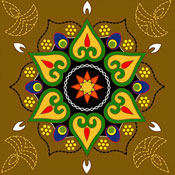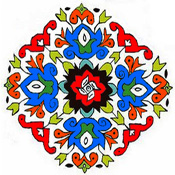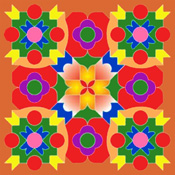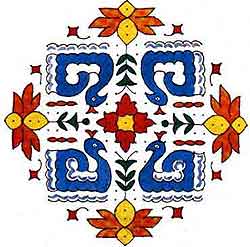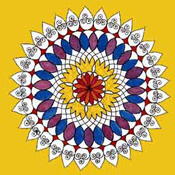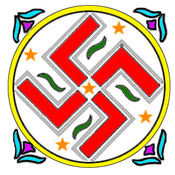Different names of Rangoli
In every region of India, it is known by different names :Kerala : 'Puvidal' ( Puv means flower and idal means arrangement, i.e. Rangoli by flowers.
Tamil Nadu : 'Kolam' ( kolam - name of a specific quality of rice. Rangoli is drawn by using rice flour )
Andhra Pradesh : 'Muggu' ( Rangoli drawn by using thick batter of soaked rice flour )
Karnataka : 'Rangoli' ( From the powder of a special kind of a rock. Tiny dots are drawn on the floor usually in even numbers. These dots are joined with the powder in a geometrical fashion )
Maharashtra : 'Rangvalli' ( Rangoli thick powder made from special rock is used in various colors, and the powder of burnt rice skin is used to draw rangoli in Konkan part of Maharashtra )
Gujarat : 'Sathiya' ( Rangoli is known by this name )
Rajasthan : 'Mandana' ( rice flour mixed with little turmeric. It is drawn on the walls )
Madhya Pradesh : 'ChowkPurna' ( Traditional designs fitted in square with leaves and flowers )
Uttar Pradesh : It is known as 'Sona Rakhana'
Orissa : It is known as 'Ossa'
Almora - Garhawal : It is well popular known as 'Alpana'
Bengal : In Bengal it is drawn by soak rice paste and known as 'Apana'
Themes in rangoli designs
Kolam have many themes which keep changing according to the seasons and occasions.
Floral or natural theme :It is most common wth flower , leaves and vines running around
Insects theme :This includes fluttering butterflies too add to the beauty of flowers.
Religious theme : These are drawn with figures of the different deities/gods and goddesses
Festival theme : Made on festivals like Diwali ,Pongal and Onam. Consists of lamps and Diyas ,you will find heaps of Diwali Rangoli design on net .Bells and bows with Santa for Christmas
Contemporary: Rangoli pictures with live effects. What once began as geometrical religious symbolism, has thus blossomed into a delightful visual art with secular esthetic appeal.
Any type of design can be converted into Kolam , it just depends on your imagination.




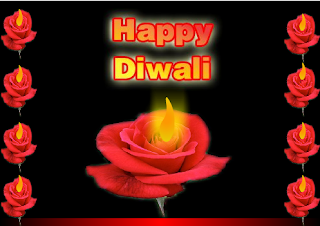
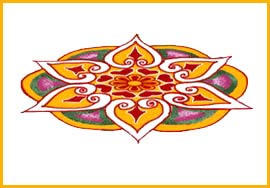

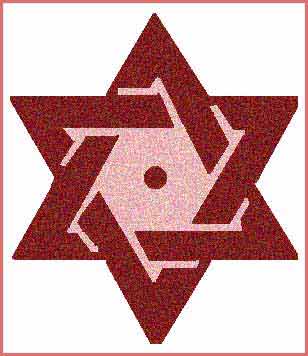
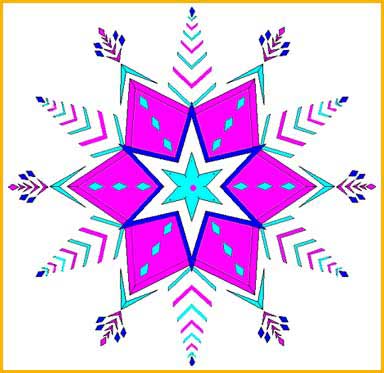
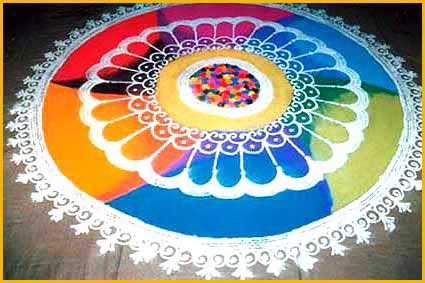
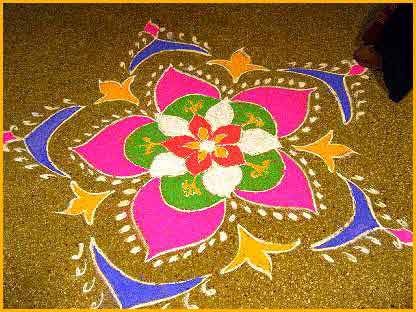
 are also made. Rangolis can be of any size, from the size of a doormat, to the covering an entire room. Though making of a Rangoli is highly dependent on the preferences and skills of the maker, lines are always drawn on one finger movement (rangolis are always drawn with fingers) and frequently, the mapping of the rangoli is done with the help of dots, which are joined to form a pattern, and then the pattern is filled with colors. One important point is that the entire pattern must be an unbroken line, with no gaps to be left anywhere, for evil spirits are believed to enter through such gaps, if they find one. In an expert hand, the images created are elaborate and look as if they are painted. In India, this art is temporary. Each rangoli design generally stays for only a day or two as it is often redone as a part of the daily routine. Certain designs are created on special occasions such as weddings and religious festivals.
are also made. Rangolis can be of any size, from the size of a doormat, to the covering an entire room. Though making of a Rangoli is highly dependent on the preferences and skills of the maker, lines are always drawn on one finger movement (rangolis are always drawn with fingers) and frequently, the mapping of the rangoli is done with the help of dots, which are joined to form a pattern, and then the pattern is filled with colors. One important point is that the entire pattern must be an unbroken line, with no gaps to be left anywhere, for evil spirits are believed to enter through such gaps, if they find one. In an expert hand, the images created are elaborate and look as if they are painted. In India, this art is temporary. Each rangoli design generally stays for only a day or two as it is often redone as a part of the daily routine. Certain designs are created on special occasions such as weddings and religious festivals.